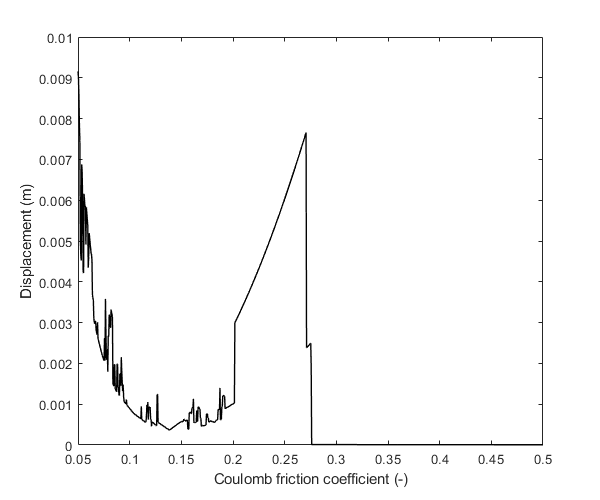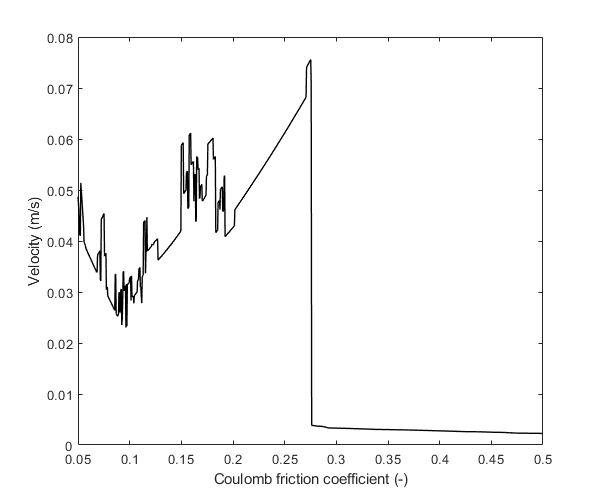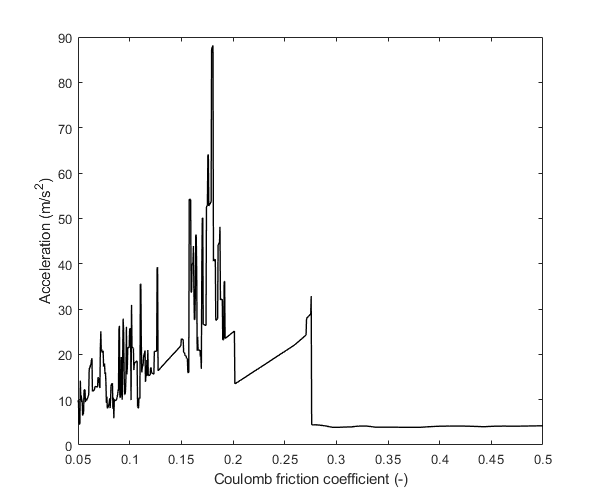example RPSReSp
Calculate rigid plastic sliding response spectra in OpenSeismoMatlab
Contents
Generate earthquake motion
For reproducibility
rng(0)
Generate earthquake acceleration time history
dt=0.02; N=10; a=rand(N,1)-0.5; b=100*pi*rand(N,1); c=pi*(rand(N,1)-0.5); t=(0:dt:(100*dt))'; xgtt=zeros(size(t)); for i=1:N xgtt=xgtt+a(i)*sin(b(i)*t+c(i)); end
Plot the generated time history
figure() plot(t,xgtt,'k','LineWidth',1) ylabel('Acceleration (m/s^2)') xlabel('Time (sec)') title('Artificial acceleration time history') drawnow; pause(0.1)

Setup parameters for RPSReSp function
Coulomb friction coefficients
CF=linspace(0.05,0.5,1000)';
Algorithm to be used for the time integration
AlgID='U0-V0-Opt';
Minimum absolute value of the eigenvalues of the amplification matrix
rinf=1;
Maximum tolerance of convergence for time integration algorithm
maxtol=0.01;
Maximum number of iterations per integration time step
jmax=200;
Infinitesimal acceleration
dak=eps;
Calculate spectra
Apply RPSReSp
[Sd,Sv,Sa]=RPSReSp(dt,xgtt,CF,AlgID,rinf,maxtol,jmax,dak);
Plot the spectra
Displacement spectrum
figure() plot(CF,Sd,'k','LineWidth',1) ylabel('Displacement (m)') xlabel('Coulomb friction coefficient (-)') drawnow; pause(0.1)

Velocity spectrum
figure() plot(CF,Sv,'k','LineWidth',1) ylabel('Velocity (m/s)') xlabel('Coulomb friction coefficient (-)') drawnow; pause(0.1)

Acceleration spectrum
figure() plot(CF,Sa,'k','LineWidth',1) ylabel('Acceleration (m/s^2)') xlabel('Coulomb friction coefficient (-)') drawnow; pause(0.1)

Copyright
Copyright (c) 2018-2023 by George Papazafeiropoulos
- Major, Infrastructure Engineer, Hellenic Air Force
- Civil Engineer, M.Sc., Ph.D.
- Email: gpapazafeiropoulos@yahoo.gr